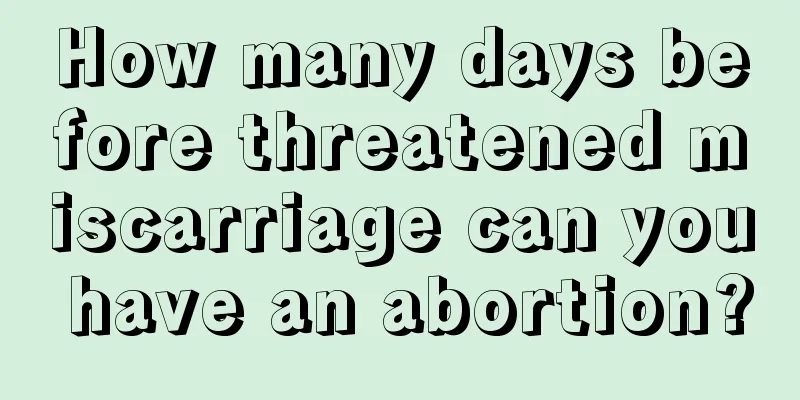Treatment for bladder endometriosis

|
In our daily lives, there are many diseases that always bother us, especially some gynecological diseases, which can even cause infertility in many women. This will have a certain impact on women’s normal life and marriage. Therefore, the treatment of gynecological diseases cannot be ignored. Among them, endometriosis is a relatively common gynecological disease. There are many types of it. Among them, bladder endometriosis has a very high incidence rate. Let’s take a look at the treatment methods of bladder endometriosis. Ectopic endometrium involving the entire thickness of the bladder detrusor muscle is called bladder endometriosis, also known as bladder detrusor endometriosis. Bladder endometriosis is a relatively rare type of endometriosis, mostly with single lesions. About 90% of them are located on the posterior wall and top of the bladder, and some are located below the entrance of the ureter. The lesions are nodular and mainly composed of fibrous tissue, smooth muscle tissue, and endometrial glands and matrix distributed in islands or strings. Treatments for bladder endometriosis: The treatment of bladder endometriosis depends on the patient's age, fertility requirements, the extent of the lesion, the severity of urinary system symptoms, and whether there is concomitant endometriosis lesions in other parts of the pelvis. 1. Conservative drug treatment: Because bladder endometriosis is a deep nodular lesion with pathological manifestations similar to adenomyosis, the therapeutic effect of commonly used endometriosis drugs such as high-efficiency progestins, contraceptives and gonadotropin-releasing hormone analogs is not ideal, with an effective rate of only about 33%, and symptoms may recur after discontinuation of the drug; it is only used as a palliative measure for patients with a small lesion range, no urinary system symptoms or who are not suitable for surgery. 2. Transurethral resection: This surgical method is simple to operate, less traumatic, quick to recover, and low in cost. It is a common method for early treatment of bladder endometriosis. However, studies have shown that bladder endometriosis is the infiltration and growth of endometrial tissue from the surface of the bladder. The surface lesions are larger than the deep lesions. Transurethral resection is performed from the bladder mucosa to the outside, so it is often impossible to completely remove the lesions. The postoperative recurrence rate is as high as 36.9%, and this operation has the risk of causing bladder perforation. It is currently not recommended as a treatment for bladder endometriosis. 3. Partial cystectomy: This is currently the preferred treatment for bladder endometriosis, which includes complete removal of the lesion and the inflammatory and scar tissue around the lesion. Therefore, the lesion is completely removed, the symptom relief rate is as high as 95%-100%, and there is almost no recurrence. There are two specific surgical methods: open surgery and laparoscopic partial cystectomy. Compared with open surgery, laparoscopic surgery has less trauma, faster recovery, and a magnifying effect. It can identify early and deep endometriosis lesions and is the preferred surgical method for bladder endometriosis. During the operation, based on the comprehensive judgment of the patient's age, fertility requirements, exploration results, etc., it is feasible to preserve fertility function, preserve ovarian function or perform radical surgery. The above is an introduction to the treatment methods of bladder endometriosis. When such a disease occurs, we must seek timely treatment and not always blindly take some medications to relieve it. In fact, we only take medications according to some symptoms when we treat it ourselves. However, if we go to the hospital for timely treatment, the doctor will use some advanced instruments to detect our specific cause and condition, so that the treatment and recovery will be faster. |
<<: What to do if you have breast pain during lactation
>>: Some tips on gynecological adnexal cysts
Recommend
Do you know the common eye diseases in different age groups?
Hua Xia, director of Tianjin University Aier Eye ...
Women's menopausal age and precautions
We all know that every female friend has menstrua...
What is the reason for the lower body to feel hot?
The hotness of the lower body may be caused by in...
My nipples hurt and my period didn't come
Menstruation is a normal physiological phenomenon...
Self-diagnosis method for common diseases of working women
As a result, health is neglected, which eventuall...
How can middle-aged women nourish their kidneys effectively?
In daily life, don’t think that kidney deficiency...
Causes of low estradiol during pregnancy
I just got pregnant, but the hospital found out t...
Home health guidance for patients with diabetes
Health Guidance With the global population increa...
How to relieve anxiety? Please keep this college entrance examination psychological guide
Difficulty falling asleep before the test, sudden...
Does sour plum soup contain pigment? What happens if you drink too much sour plum soup?
Sour plum soup can clear away heat and relieve su...
What is the normal level of estradiol in early pregnancy?
When pregnant women go to the hospital for a chec...
When is the best time for women to check their hormone levels?
The six-item hormone test (six-item sex hormone t...
How to determine the normal value of anteroposterior position of uterus
How to judge the normal value of the anterior-pos...









